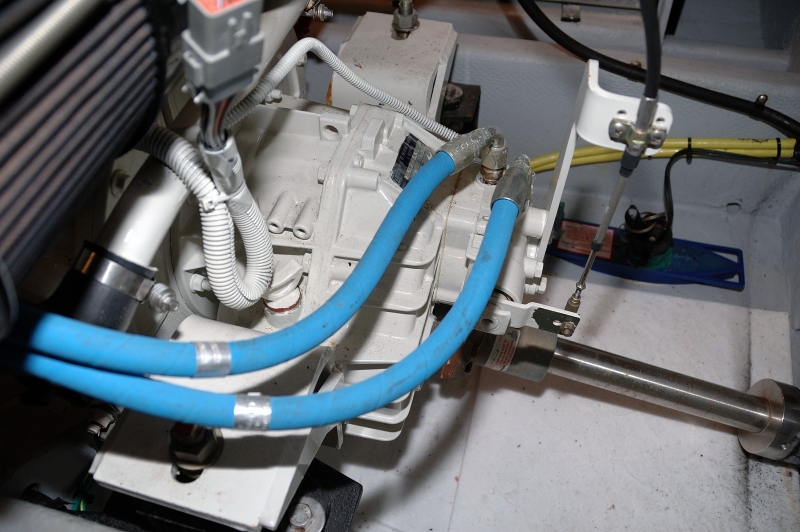Don’t Overlook Your Boat’s Gearbox
23rd September 2024
The transmission in your boat is the vital link between the engine and the prop, yet many boat owners never pay attention to their gearbox until it’s too late. A review of the owner’s transmission manual will give you all the information you need regarding the “care and feeding” of your transmission. If you have any questions not covered in the manual, check the transmission manufacturer’s website.
Inspecting the outside of the transmission and taking appropriate action can prevent failures. Oil or seawater dripping onto the transmission can gum up or corrode vital shift linkage and shift control components.
Most recreational boaters will not meet the operating-hour oil-change interval. In that case, the owner should plan on changing the oil and filter once a year. Clean oil is cheap insurance. Use genuine filters and recommended oils. While OE filters might be more expensive, they are specified because they have been designed and tested by the factory to meet the specific needs of the transmission. Utilizing non-original parts or the wrong lubricants may reduce component life and could possibly cause harm to the transmission.

Transmissions don’t burn oil and that constant level of oil is one reason that boat owners neglect to check the oil. However, checking the oil level and checking the bilge for any sign of an oil leak are essential to effective transmission maintenance. An oil leak can occur and yet not be detected even if you inspect the bilge for the presence of oil because of where leaks occur at the front and rear seals and the oil cooler. Leaks in the first two areas can be spotted in the bilge, but an internal leak in the oil cooler does not leave oil in the bilge.
Most common are leaks in the rear shaft seal. They often occur simply because of the location of this seal in the boat, its low down and close to the shaft log and stuffing box, where salt water often seeps in and is slung around, drenching the transmission output shaft. This can cause corrosion and pitting of the output shaft, and seal leaks can develop. Keeping water out of the bilge keeps this from happening.
Oil coolers are almost always mounted on some area of the transmission. Smaller transmissions have coolers with external oil lines that can develop leaks, and all oil coolers can develop internal cracks through which oil can leak. These leaks are particularly dangerous because they cannot be seen. Oil leaks into the water side of the cooler and exits the exhaust. Due to the higher pressure on the oil side of the cooler, a pinhole leak can drain a transmission in a matter of hours. Only by checking the oil level will evidence of such a leak be detected.
Transmission oil cooler zincs should be changed along with engine zincs, and coolers should be cleaned and tested when the engine cooling system is serviced.
Ignore your transmission and sooner or later it will fail you.


